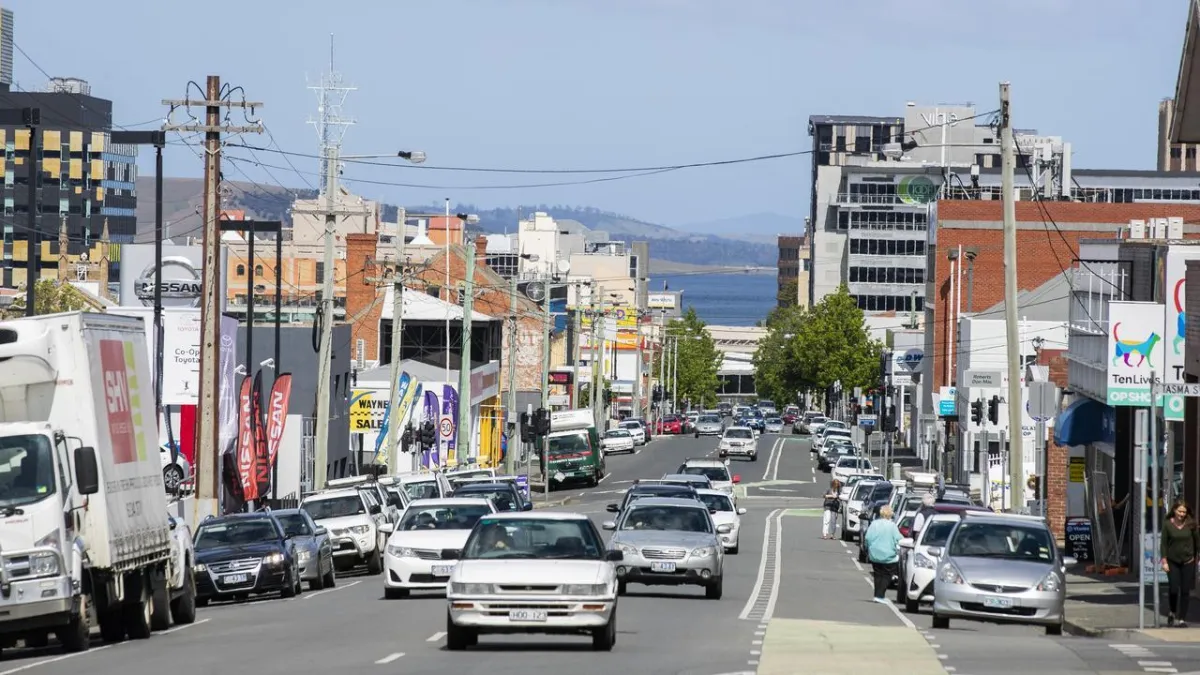
Hobart’s Transport Strategy: A Suburban Lens for a Business District Reality
When Hobart released its latest Transport Strategy, many welcomed its commitment to sustainability, active transport, and climate resilience. They may be goals to be admired but they bely a significant misalignment: this Strategy has been written through the lens of suburban neighbourhoods, not the heart of Tasmania’s capital city. A business district is simply not a suburb.
People live in suburbs. Transport challenges revolve around connecting homes to schools, shops, recreation, and local services. Walking, cycling, and occasional bus trips can do much of the heavy lifting in this environment. Slower traffic speeds, wide even footpaths and safe crossings are the foundation of good suburban mobility.
But Hobart’s CBD is a different beast. As a capital city and physical hub for three neighbouring council areas it represents the commercial and cultural heart of Southern Tasmania. Every day, thousands of people and vehicles pour into a very compact grid of streets. Hobart’s business district generates the highest economic output per square metre in the State. Its transport needs are not gentle and dispersed, but concentrated and intense.
This distinction matters. Because when you read the current Transport Strategy, what you find is a framework more suited to leafy neighbourhoods than to a pressure-cooker CBD. The emphasis is on encouraging transport “choice,” on behaviour change, and on walking and cycling for local trips. These are good things, but cannot meet the needs of a Central Business District.
The Strategy is light on commitments to high-frequency, high-capacity public transport. Where it speaks of public transport, it refers to advocacy and support. But Hobart’s CBD requires immediate action: additional bus services and reliable timetabling that can deliver seamless connections for thousands of commuters. Without a strong functional public transport system, congestion drags on productivity, and our local businesses bear the cost.
Kerbside management is another case in point. In the suburbs, it is largely a matter of on-street parking turnover. In the CBD, kerb space is gold. It must accommodate shoppers, deliveries, taxis, buses, waste collection, and emergency service vehicles—all within narrow historic streets. The Strategy acknowledges kerbside issues, but mostly in suburban terms. Where is the plan for dynamic loading zones, for timed priority for freight, for late-night drop-offs near hospitality precincts?
Freight appears as an afterthought. A single paragraph on last-mile goods movement does not do justice to the logistics reality of a CBD where freight is defined with timely delivery. Nor does the Strategy address the friction between delivery trucks and heavy pedestrian flows on Collins Street and Elizabeth Street.
Then there are the evening and night-time needs of the city. The CBD is not nine-to-five. We enjoy festivals like MOFO. We enjoy Concerts and Restaurants. Hobart’s Transport Strategy offers little assurance that public transport will run at a frequency and reliability that supports a vibrant night-time economy. Suburbs sleep; business districts thrive into the night.
It is true the Strategy contains many positive elements such as aspirations for better active transport and a commitment to sustainability and resilience in the face of climate change. Aspirations alone do not justify treating our city centre as though it were just another suburb.
Hobart needs a dual-lens approach by considering improving suburban mobility with a dedicated CBD transport framework, one that:
sets binding targets for mode share into the city,
manages kerbside space,
integrates sufficient freight logistics into street design, and
provides late-night public transport supporting a 24-hour economy.
A central business district comprises of different rhythms and purpose than a neighbourhood. Even more so a capital city. Our transport strategy should recognise this reality.
In the end, a strategy written for suburbs will deliver suburban outcomes. And Hobart’s CBD—and indeed the State’s economy—deserves better than that.
